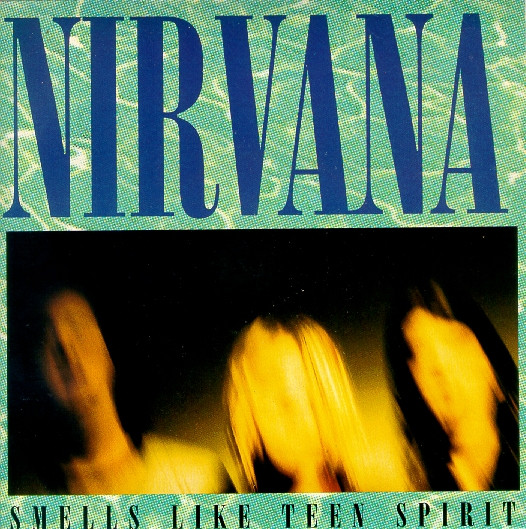Nirvana’s “Smells Like Teen Spirit” stands as an iconic emblem of the 1990s alternative rock scene, a song that encapsulates the spirit of a generation disillusioned with mainstream culture and hungry for authenticity. Released in 1991 as the lead single from their breakthrough album “Nevermind,” the track catapulted Nirvana and the grunge movement into the mainstream consciousness, forever altering the landscape of popular music.
At its core, “Smells Like Teen Spirit” is a cacophony of raw emotion, aggression, and dissonance. The song’s thunderous guitar riff, courtesy of Kurt Cobain, instantly grabs the listener’s attention, while Dave Grohl’s pounding drums and Krist Novoselic’s driving bassline create a relentless groove that propels the song forward with unrelenting force. Cobain’s signature raspy vocals deliver cryptic and often nonsensical lyrics that simultaneously express apathy and rebellion, reflecting the disillusionment and angst of Generation X.
The title itself, “Smells Like Teen Spirit,” is enigmatic, derived from a phrase scrawled on a wall by Kathleen Hanna, a friend of Cobain and member of the riot grrrl band Bikini Kill. The phrase was meant to capture the essence of youthful rebellion and the DIY ethos of the underground punk scene. Cobain, unaware of its origin, interpreted it as a reference to teenage spirit, and thus, a timeless anthem was born.
Lyrically, “Smells Like Teen Spirit” is open to interpretation, with Cobain’s cryptic words inviting listeners to project their own meaning onto the song. Lines like “Here we are now, entertain us” and “I feel stupid and contagious” capture the ennui and disillusionment of youth, while the anthemic chorus of “With the lights out, it’s less dangerous” serves as a rallying cry for the disaffected and marginalized.
But perhaps what truly sets “Smells Like Teen Spirit” apart is its revolutionary impact on the music industry. In an era dominated by polished pop and hair metal, Nirvana’s raw and unfiltered sound represented a breath of fresh air, signaling a seismic shift in popular music. “Nevermind” went on to dethrone Michael Jackson’s “Dangerous” from the top of the Billboard charts, signaling the end of one era and the dawn of another.
Moreover, “Smells Like Teen Spirit” transcended its status as a mere song, becoming a cultural touchstone that resonated with an entire generation. Its anthemic chorus and infectious energy made it an instant classic, while its anti-establishment ethos struck a chord with those disillusioned by the status quo. The song’s accompanying music video, directed by Samuel Bayer, further solidified its iconic status, featuring a chaotic high school pep rally filled with disaffected youths and culminating in a frenzied mosh pit.
Even decades after its release, “Smells Like Teen Spirit” remains as relevant and powerful as ever, its raw energy and rebellious spirit continuing to inspire new generations of music fans. Whether blasting through the speakers of a dingy basement club or reverberating across a stadium filled with thousands of fans, the song’s impact is undeniable, a testament to the enduring power of rock ‘n’ roll to challenge norms, provoke thought, and incite change. In the end, “Smells Like Teen Spirit” isn’t just a song—it’s a cultural phenomenon, an anthem for the disenfranchised, and a timeless reminder of the power of music to unite, inspire, and transcend.
